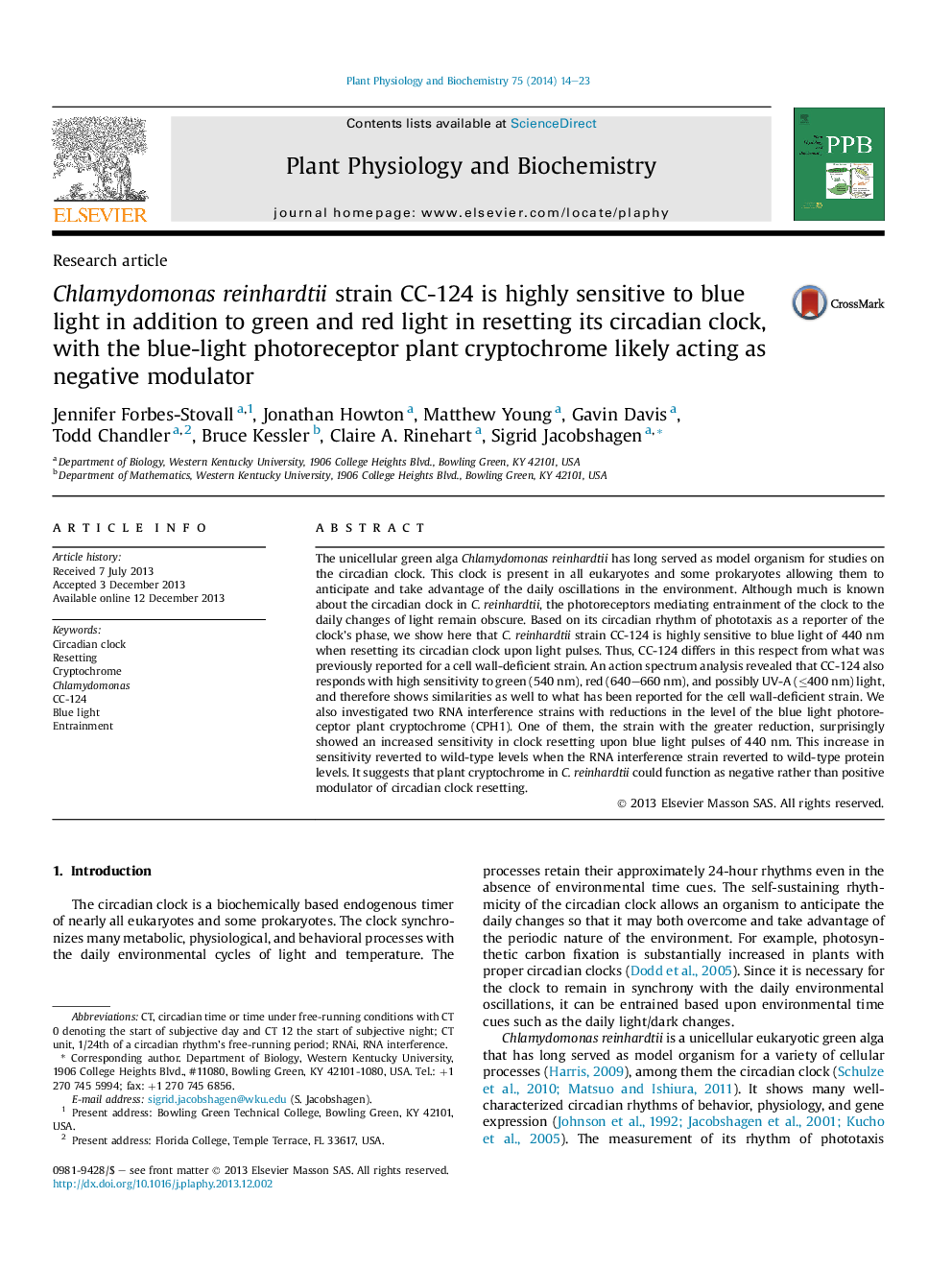| کد مقاله | کد نشریه | سال انتشار | مقاله انگلیسی | نسخه تمام متن |
|---|---|---|---|---|
| 2015823 | 1541946 | 2014 | 10 صفحه PDF | دانلود رایگان |

• Chlamydomonas reinhardtii circadian clock resetting by light was investigated.
• Strain CC-124 is highly sensitive to blue light of 440 nm in this response.
• High sensitivity was also observed to green, red, and potentially UV-A light.
• Only the blue light response deviates from what had been reported for strain CW15.
• Photoreceptor plant cryptochrome likely modulates blue light response negatively.
The unicellular green alga Chlamydomonas reinhardtii has long served as model organism for studies on the circadian clock. This clock is present in all eukaryotes and some prokaryotes allowing them to anticipate and take advantage of the daily oscillations in the environment. Although much is known about the circadian clock in C. reinhardtii, the photoreceptors mediating entrainment of the clock to the daily changes of light remain obscure. Based on its circadian rhythm of phototaxis as a reporter of the clock's phase, we show here that C. reinhardtii strain CC-124 is highly sensitive to blue light of 440 nm when resetting its circadian clock upon light pulses. Thus, CC-124 differs in this respect from what was previously reported for a cell wall-deficient strain. An action spectrum analysis revealed that CC-124 also responds with high sensitivity to green (540 nm), red (640–660 nm), and possibly UV-A (≤400 nm) light, and therefore shows similarities as well to what has been reported for the cell wall-deficient strain. We also investigated two RNA interference strains with reductions in the level of the blue light photoreceptor plant cryptochrome (CPH1). One of them, the strain with the greater reduction, surprisingly showed an increased sensitivity in clock resetting upon blue light pulses of 440 nm. This increase in sensitivity reverted to wild-type levels when the RNA interference strain reverted to wild-type protein levels. It suggests that plant cryptochrome in C. reinhardtii could function as negative rather than positive modulator of circadian clock resetting.
Figure optionsDownload as PowerPoint slide
Journal: Plant Physiology and Biochemistry - Volume 75, February 2014, Pages 14–23